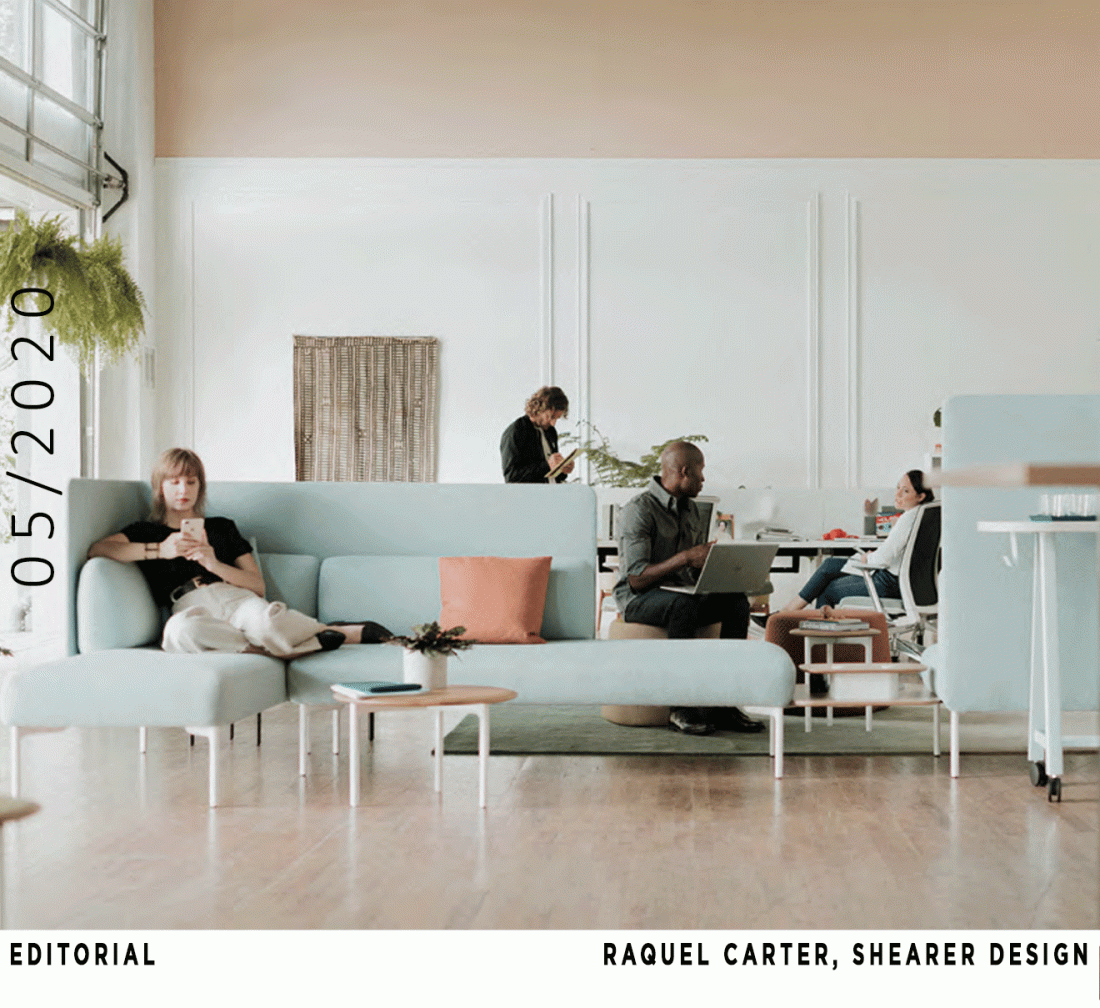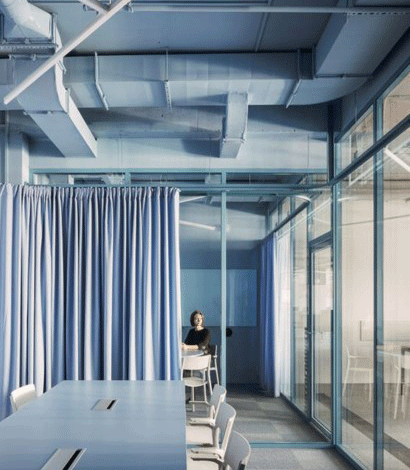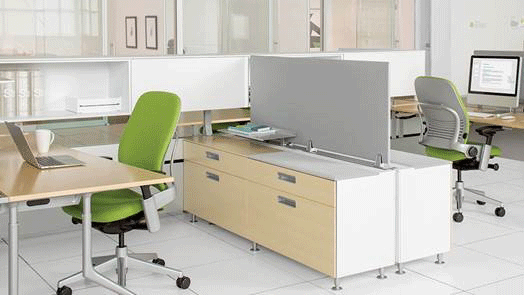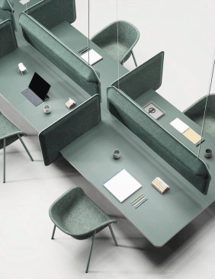
Quick Guide for the Return of the Small-Medium Office
Many believe that we are nearing our peak of the first wave of Covid-19 in North America. Alberta’s Stage 1 is starting May 14, with the opening of some non-essential businesses, but is still advising remote working. “Gatherings of more than 15 people are prohibited, however this will not prohibit businesses from having more than 15 workers in a workplace.” [1] Within weeks, Covid-19 restrictions will be relaxed more and the full return to the offices will ensue. With this next big shift on the horizon organizations are working to find ways to prepare.
The catch?
.
.
Little is known about what is effective in lessening viral transmission in the office environment. The move back into the office is an undertaking that should not be taken lightly. More than ever we need to consider how our offices influence our health and can create an atmosphere of security. One way to lessen viral transmission is through personal interventions, which can be encouraged or facilitated by an organization.
.
5 WAYS TO LESSEN VIRAL TRANSMISSION IN THE OFFICE:
1 |Ensure that employees wash their hands upon entry and intermittently.
2 |Provide face masks.
3 |Facilitate frequent wipe down of hard surfaces.
4 |Minimize shared accommodations.
5 |Maintain the 6-foot social distancing regulation.
.

The Details:
One recommended intervention is the use of personal protective equipment (PPE) and higher hygiene standards throughout the workplace. Employers should request that employees wash their hands upon entry and intermittently. To encourage this, hand cleaning stations should be provided throughout the office. These locations should be strategically chosen to maximize use and effectiveness. These stations should be located close to high touch-points (such as copy rooms), high contamination areas (entries), and high visibility areas (corridors).
Providing face masks is another easy way to maintain health in the workplace. While face masks do not protect the user; when used correctly it does help contain the virus carried in water droplets expelled from exhaling.
“Influenza viruses are believed to be transmitted from person-to-person primarily through virus-laden droplets that are generated when infected persons speak, cough or sneeze… Transmission also may occur through direct and indirect contact with infectious respiratory secretions, (e.g., by hands that subsequently deliver infectious material to the eyes, nose or mouth).” [2]
.
Where possible, employers should minimize shared accommodations and equipment. The best practice is to implement a staged return based on 30 – 60 % occupancy, depending on the office density.
.
Another intervention is the frequent wipe down of hard surfaces, including “high-touch/shared surfaces” [3]. Many governing bodies are recommending that individuals and employers provide a personal package of cleaning items. Key items to include are surface wipes and hand sanitizer, both encourage the care of an individual and workstation. To allow for the constant sanitation of surfaces, woven fabrics should be replaced with less porous materials of vinyl, leather, and the like. Less porous materials are easier to clean than their woven counterparts. Hard surfaces, especially metal and plastic, keep the virus for longer periods than any other material. For that reason, we should take extra care and precaution using these surfaces in the built environment. Regardless of the material, all finishes in the workplace should be researched for cleanability and manufacturer recommended cleaning solutions, ensuring that the materials are properly cleaned and not damaged by the cleaning solution.
.
Desks, technology, and office equipment such as staplers should be designated to a single user. Hotelling, hot desking, and other unassigned or shared workstations are a higher risk for transmission. These desking types should be assigned and reconfigured to ensure proper distance is maintained. Or every other desk can be occupied to minimize the labor to move furniture. Where possible, employers should minimize shared accommodations and equipment. The best practice is to implement a staged return based on 30 – 60 % occupancy, depending on the office density.
.

.
Essential items that are required by more than one user, such as printers, should be regularly cleaned. In whatever capacity they are able, companies should move to a touchless workplace. A touchless workplace utilizes technology to reduce the amount of touch points in an office. With our advancing technology, phones can be configured to control many items in the workplace. For example, a personal phone can be used at a sign in kiosks, to interact with printers, lights, room booking and much more.
.
In the return to the workplace we need to reduce physical interaction and move to a touchless experience. Touchless technology should be reviewed and strategically implemented if possible.
.
To protect occupants, we should ensure the 6-foot social distancing regulation is not broken. The redesign of office spaces has been using ground breaking initiatives revolving around social distancing. Successful projects have taken the 6-foot distancing and transformed it into a visual experience. Floor space is given a redesign following physical separation and strategies to guide users through the experience. Workstations are clearly marked with a 6-foot diameter circle on the floor around the employee. The bold shape is a visual cue to keep distance. The circles also designate circulation space where occupants are free to move around.
To prevent occupants from crossing path in the circulation space, the office designates that all users should move in a single direction. Posted signs and outlined paths supplemented with arrows visually directs the user around the space.
Shared areas such as kitchens and coffee stations require guidelines depending on their size. In some cases, one person at a time may be allowed and a schedule created. Seating may be removed or labelled so 6-foot spacing is maintained. At any rate, each user must wipe down surfaces before and after use.
.
Space planning solutions can be used to reduce viral transmission among colleagues at work through social distancing.
.

.
“We must not fix the office in a way that weakens community, creativity or productivity” [4]
.

A key to the successful workplace is the continued use of the open office. With the return to the workplace there is a resurgence in the need for community and communication. Despite all the strategies and policies to protect occupant safety, ensuring that company culture is not scarified is a high priority. Drastic changes in the office layout, such as moving to enclosed offices or workstations, may lead to the space reading as clinical and occupants feeling isolated. To preserve the open office, workstations can be reoriented in a pinwheel configuration to avoid face to face orientation. In some offices, workstation panels are retrofitted with glass upper panels that function as a sneeze guard.
.
Workplaces need to foster health, community, and trust. If they succeed, the shift back into the workplace will not only be easy, but welcome.
.

Raquel Carter
Interior Designer
Sources:
[1] Alberta.ca COVID-19 INFORMATION WORKPLACE GUIDANCE FOR BUSINESS OWNERS https://www.alberta.ca/assets/documents/covid-19-workplace-guidance-for-business-owners.pdf
[2] “Interim Guidance for the Use of Masks to Control Seasonal Influenza Virus Transmission” Center for Disease Control and Prevention, March 5, 2019. https://www.cdc.gov/flu/professionals/infectioncontrol/maskguidance.htm
[3] “Guidance on Preparing Workplaces for COVID-19 [PDF File]” U.S. Department of Labor, Occupational Safety and Health Administration, March 1, 2020. Retrieved from https://www.osha.gov/pls/publications/publication.html
[4] “Designing the Post-COVID Workplace [PDF File]” Steelcase, Edition 1. Retrieved from https://www.steelcase.com/research/articles/designing-the-post-covid-workplace/
